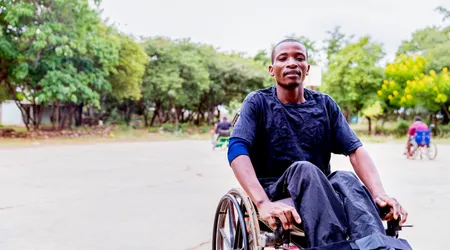The Politics of Accessibility: Why Progress Is Often Delayed

The politics of accessibility shape how societies prioritize inclusion, yet progress lags despite clear ethical and legal imperatives.
In 2025, digital and physical barriers persist for the 1.3 billion people with disabilities globally, as reported by the World Health Organization.
Accessibility isn’t just about ramps or screen readers it’s a battleground of competing interests, bureaucratic inertia, and economic calculations.
Why, despite decades of advocacy, do we still struggle to make the world truly inclusive?
This article dives into the complex interplay of policy, power, and progress, unpacking why systemic change remains elusive.
The politics of accessibility intertwine with public policy, where noble intentions often clash with practical realities.
Governments pass laws like the European Accessibility Act (EAA), effective June 28, 2025 but enforcement varies widely.
Businesses face compliance costs, while advocates push for universal design. This tension creates a patchwork of progress, where some thrive and others are left behind.
Consider a small e-commerce business: complying with EAA’s Web Content Accessibility Guidelines (WCAG 2.2) demands time and resources, often deprioritized for profit.
Meanwhile, people with disabilities face exclusion, their voices drowned out by louder economic concerns.
This article explores the structural, economic, and cultural forces delaying accessibility. From legislative gaps to corporate resistance, we’ll uncover why change stalls and what’s at stake.
Expect real-world examples, a fresh perspective, and a call to rethink how we approach inclusion in 2025.
Legislative Promises and Their Limits
Laws like the EAA and the Americans with Disabilities Act (ADA) set ambitious accessibility goals. Yet, the politics of accessibility reveal a gap between promise and practice.
The EAA mandates digital accessibility for businesses by mid-2025, but small firms with under 10 employees are exempt.
This loophole leaves millions navigating non-compliant websites. Enforcement is another hurdle national authorities vary in rigor, creating uneven standards across the EU.
Consider a visually impaired user trying to book a flight online. A non-compliant website with poor contrast or missing alt text becomes a barrier.
++ How Disability Is Represented in National Census and Why It Matters
The EAA’s 2025 deadline aims to fix this, but compliance audits are often superficial. Businesses may check boxes without meaningful change, prioritizing optics over function.
This half-hearted approach undermines the law’s intent, leaving users frustrated.
Moreover, legislative timelines are sluggish. The EAA, adopted in 2019, gave businesses six years to prepare, yet many scramble as the deadline nears.
Why the delay? Governments balance accessibility with economic growth, often favoring the latter. This hesitation reflects a deeper issue: accessibility is seen as a cost, not a right.

Economic Barriers and Corporate Pushback
The politics of accessibility often hinge on money. Businesses, especially smaller ones, cite high costs as a reason to delay compliance.
Implementing WCAG 2.2 can cost thousands redesigning websites, training staff, or hiring consultants. For a mid-sized retailer, this might mean diverting funds from marketing or inventory, a tough sell in a competitive market.
Take the example of a regional bookstore chain in Germany. Facing EAA compliance, they must overhaul their online store by June 2025.
The cost of retrofitting adding ARIA landmarks, ensuring keyboard navigation feels daunting.
Yet, accessible websites boost SEO and customer reach, potentially increasing revenue by 20%, per a 2023 Forbes study. Still, short-term costs overshadow long-term gains, stalling progress.
Also read: Prison Reform and Disability: An Overlooked Civil Rights Issue
Corporate pushback also stems from a lack of awareness. Many executives don’t understand accessibility’s scope, viewing it as a niche concern.
This mindset ignores the 101 million EU citizens with disabilities, a significant market. When profit trumps inclusion, the politics of accessibility become a tug-of-war between ethics and economics.
Cultural Attitudes and Misconceptions
Cultural resistance slows the politics of accessibility more than laws or budgets. Many view accessibility as a “special need” rather than a universal benefit.
This misconception frames inclusion as charity, not a societal necessity. In reality, accessible design like clear signage or captioned videos benefits everyone, from seniors to parents with strollers.
Imagine a public transit app lacking audio navigation. A blind user struggles, but so does a tourist unfamiliar with the system.
Read more: How Inclusive Education Benefits All Students -Not Just Those with Disabilities
Universal design solves both problems, yet cultural inertia prioritizes able-bodied norms. Misconceptions persist that accessibility is “too complex” or only for a few, ignoring its broader value.
Education gaps fuel this resistance. Most developers aren’t trained in accessibility, and businesses rarely prioritize it in hiring.
Changing this requires a cultural shift seeing accessibility as integral to design, not an add-on. Until then, the politics of accessibility will face pushback from outdated mindsets.
Advocacy and the Power Imbalance
Advocacy drives accessibility forward, but the politics of accessibility expose a power imbalance.
Disability rights groups push for change, yet their influence pales against corporate and governmental clout.
The UN Convention on the Rights of Persons with Disabilities (2006) frames access as a human right, but implementation lags. Advocates often lack the resources to hold powerful entities accountable.
For instance, a grassroots group in Spain campaigns for accessible voting systems. They face bureaucratic stonewalling and limited funding, while election boards cite “technical challenges.”
This power gap frustrates progress, as those most affected have the least say. The politics of accessibility demand amplifying these voices to shift priorities.
Even when advocates succeed, victories are incremental. The EAA’s passage was a milestone, but its enforcement relies on national governments, which vary in commitment.
Activists must navigate a maze of red tape, diluting their impact. Bridging this gap requires policies that empower, not marginalize, advocates.
Technology as a Double-Edged Sword
Technology can revolutionize accessibility, but the politics of accessibility reveal its limitations. AI-driven tools like screen readers or automated captions have advanced inclusion, yet they’re not foolproof.
Poorly designed algorithms can misinterpret content, leaving users stranded. For example, an AI captioning tool might garble a live-streamed council meeting, excluding deaf viewers.
On the flip side, tech giants like Google prioritize accessibility in products, boosting SEO for compliant websites. Yet, smaller firms lack the resources to leverage these tools.
The EAA pushes for tech-driven solutions, but without universal adoption, gaps remain. Technology’s promise is tempered by unequal access and implementation.
The pace of innovation also creates challenges. Rapidly evolving platforms outstrip accessibility standards, leaving regulators scrambling.
A new social media app might launch without WCAG compliance, forcing users to wait for updates. The politics of accessibility must address this lag to ensure tech serves all.
A Path Forward: Rethinking Priorities

Breaking the cycle of delay in the politics of accessibility requires a paradigm shift. Accessibility must be reframed as a universal good, not a niche obligation.
Governments should incentivize compliance tax breaks for accessible businesses, for instance while strengthening enforcement. The EAA’s fines are a start, but proactive rewards could drive faster change.
Businesses need to see accessibility as an investment. A 2025 study by Accenture found that inclusive companies outperform peers by 15% in revenue.
Training programs, like those offered by W3C, can equip teams to build accessible products from the ground up, reducing retrofitting costs.
Imagine accessibility as a bridge: every user deserves to cross it, not just a select few. Governments, businesses, and advocates must collaborate to build it.
By prioritizing inclusion, we create a world where no one is left behind. Isn’t that the society we all want?
The Role of Public Awareness
Public awareness is a linchpin in the politics of accessibility, yet it’s often overlooked. Most people don’t grasp how accessibility impacts daily life.
Campaigns like the Access City Award, won by Vienna in 2025, highlight progress but reach limited audiences. Broader education is needed to shift perceptions and drive demand for change.
Consider a social media campaign showcasing real stories like a wheelchair user navigating an inaccessible store.
Such narratives humanize the issue, sparking empathy and action. Without public pressure, policymakers and businesses lack urgency, delaying reforms. Awareness turns bystanders into allies.
Schools and workplaces can amplify this. Incorporating accessibility into curricula or corporate training fosters a culture of inclusion.
When people understand the stakes, they’re more likely to support policies that prioritize it. The politics of accessibility thrive when the public demands progress.
Table: Key Accessibility Legislation in 2025
| Legislation | Region | Effective Date | Key Requirements | Exemptions |
|---|---|---|---|---|
| EAA | EU | June 28, 2025 | WCAG 2.2 compliance for digital products | Small businesses (<10 employees, €2M revenue) |
| ADA | USA | 1990 (ongoing) | Non-discrimination in public accommodations | Limited digital mandates |
| UN CRPD | Global | 2006 (ongoing) | Accessibility as a human right | Non-binding, varies by country |
Global Perspectives and Local Realities
The politics of accessibility vary globally, complicating progress. While the EAA sets a high bar in Europe, other regions lag.
In the U.S., the ADA is robust but lacks universal digital standards, leaving gaps in enforcement. Developing nations face resource constraints, limiting infrastructure upgrades.
For example, a rural school in India might lack funds for braille textbooks, while urban centers prioritize flashy tech.
Global frameworks like the UN CRPD exist, but local realities poverty, corruption hinder implementation. Harmonizing standards globally is a daunting but necessary goal.
Collaboration can bridge this divide. Wealthier nations could fund accessibility projects in poorer ones, sharing expertise.
Local governments must tailor solutions to their context, ensuring relevance. The politics of accessibility demand global solidarity to create equitable change.
Conclusion
The politics of accessibility reveal a truth: progress stalls when inclusion is treated as optional. Laws like the EAA and ADA set the stage, but without enforcement, cultural shifts, and economic incentives, they’re hollow promises.
The 1.3 billion people with disabilities deserve better a world designed for all. From businesses dodging costs to governments dragging their feet, the barriers are clear.
Yet, so are the solutions: prioritize universal design, amplify advocates, and educate the public.
Accessibility isn’t a burden; it’s an opportunity to build a fairer society. By rethinking priorities, we can move beyond delays.
Let’s commit to a future where everyone belongs because inclusion isn’t just right, it’s essential.
Frequently Asked Questions
Q: Why is accessibility progress so slow despite laws like the EAA?
A: Progress lags due to high compliance costs, uneven enforcement, and cultural misconceptions treating accessibility as optional rather than essential.
Q: How does accessibility benefit businesses beyond compliance?
A: Accessible websites improve SEO, expand customer reach, and boost revenue, with inclusive companies seeing 15% higher profits, per Accenture.
Q: What can individuals do to support accessibility?
A: Advocate for inclusive policies, share real stories, and demand accessible products to pressure businesses and governments to prioritize change.
